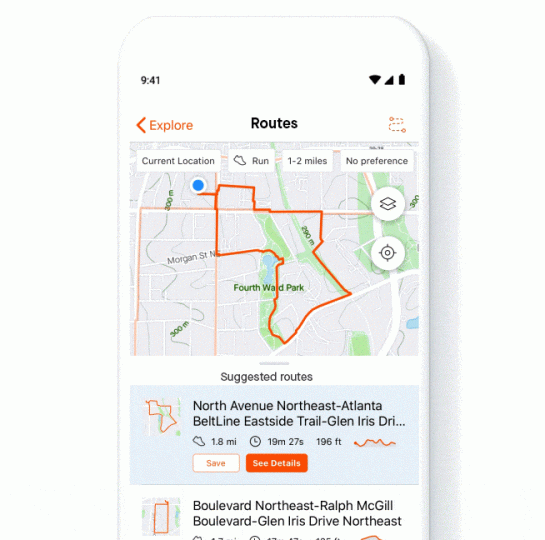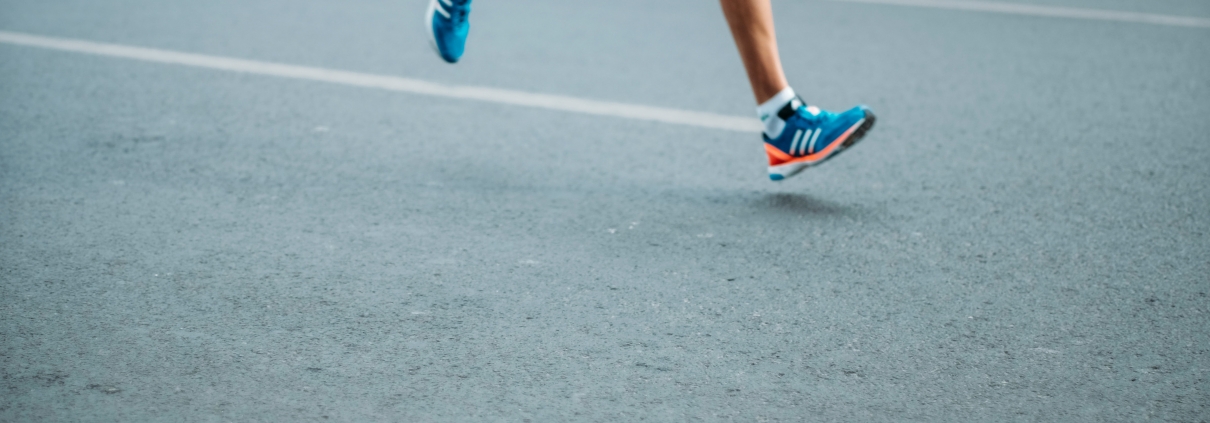Future use cases for air quality data: Make sports apps environmentally sensitive
As part of the InterLuft project, we are envisioning future use cases of ubiquitous air quality data in our cities: This article is part of a series of visions of the future and thought experiments on how our surroundings might become more environmentally sensitive with the increasing availability of environmental datasets. Read on to find out more!
Outdoor sports and urban air pollution: a major cause for concern
Running is a major pasttime of citydwellers, and the ongoing Coronavirus pandemic has increased the number of regular runners even further. While there are considerable health benefits to running in cities, we often receive emails with the same question: Is it still healthy to go for a run if air pollution levels are high?
It turns out, answering that question is not so easy. While health professionals tend to agree that outdoor sports activities outweigh the risks associated with the exposure to outdoor air pollution, higher pollution concentrations still come with health risks. They can even trigger asthma attacks! This is why an increasing number of professional sports events deploy sensors to collect data on ambient air quality and try to protect the athletes from the highest pollution concentrations.
Because of that, it makes sense to keep an eye of outdoor air pollution levels when deciding when to do your daily or weekly bout of outdoor sports. However, a current major limitation is the availability of data. The next public monitoring station is often five or more kilometers away, and there is a significant delay between measurement and the data becoming available. In many cases, environmental agencies even only publish averages spanning several hours up to a day. This data does not support citizens in making informed decisions about when and where to plan their outdoor workouts.
A vision of the future: smart route recommendations for environmentally-aware athletes?
Hyperlocal and real-time air quality data can help athletes in two ways: During major sports events, the organizers can deploy countermeasures to pollution spikes in real-time along the planned track, for instance through the use of water sprinklers to create artificial mist and bind and reduce airborne particulate matter, or switching to an alternative route. For individual athletes, publicly available data can help them to decide when and were to coduct their exercise.
An increasing percentage of people are already using apps to track their fitness and improve exercise experience: by tracking performance data such as run length and pace, heart rate and others, by competing on virtual challenges, by sharing favourite running routes with the community and their recent runs with their friends. Depending on the age category, nearly half of recreational athletes are using fitness tracking apps today.

The fitness app Strava lets its users explore favourite routes closeby. Source: Strava / strava.com
With the increasing prevalence of air quality sensors, deployed in citizen-driven or city-run networks, more and more air quality datasets become available. At some point, it will make sense for fitness apps to also include information about local air quality levels and developments. This way, users would be able to quickly include the following data into their workout habits:
- What is the current air quality like in my neighborhood? Is it getting better or worse?
- Is the air pollution at a level where it might worsen pre-existing health conditions, such as triggering an asthma attack?
- When going for a run – which route could I take from my current location that exposes me to the least possible amount of air pollution?
- Based on my typical exercise time – might later in the day or tomorrow be a better time for sports, taking into consideration air pollution forecasts?
Providing users with tailored information around the topic of air pollution could be the next big thing for fitness applications. In any case, it will help them to connect to a topic of growing importance and concern. Clean air was a 2020 top 10 world-wide consumer trend, and 9 out of 10 people globally are living in areas with too high pollution levels.
Some advice while we are waiting for a solution like the one described above: Air pollution levels tend to be lower in the mornings before rush hour and in the late evenings, as well as after rainfall. If you would like to avoid running in smog, trying to stick to those times can already reduce your pollution exposure significantly. Additionally, you can check our air quality citizen portal, where we aggregate real time information about hyperlocal air quality data from several different sources, including our own sensor networks.

 Unsplash.com / sporlab
Unsplash.com / sporlab
